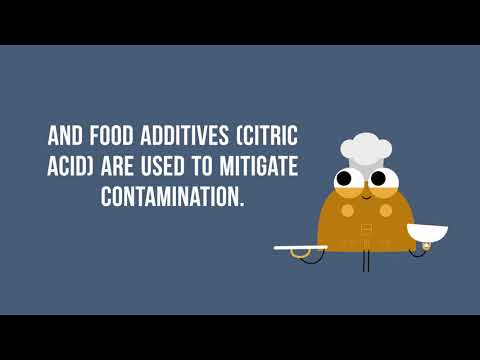
Not many of us know that aflatoxins contamination has been recorded as contributing to 25% of estimated loss of the world’s food supply. However, some of us may see aflatoxin in the news every so often being associated with food recalls. These food reliability and safety issues are why aflatoxin is on the radar of government organizations such as the U.S. Department of Agriculture and the European Food Safety Authority.
What are aflatoxins?
Aflatoxins are part of a larger group of toxins called mycotoxins, which are toxic metabolites that are produced by certain types of fungi and can infect agricultural commodities and make food inedible. Aflatoxins are mainly produced from the Aspergillus species, usually in poor storage or adverse weather conditions. Aspergillus is a species of filamentous fungi found in soil, seeds and grains and decaying vegetation. The contamination occurs when Aspergillus species reproduce in favorable conditions (high temperature and humidity), invading the crop. There are four major types of aflatoxins: B1, B2, G1 and G2, which are named according to the mechanisms of detection (e.g., blue or green fluorescence under UV light). Aflatoxin B1 is the most common in food and is highly toxic having carcinogenic properties. In addition to these four, there is aflatoxin M1, which is produced as a byproduct of the B1 toxin undergoing an enzymatic process in milk and milk products. Now that you know what aflatoxins are and how they’re produced, let’s explore if they could be impacting how we build our grocery lists.
Aflatoxins in food
Many farmers and food producers in the United States are faced with aflatoxin contamination. In the southern and midsouth regions of the US, aflatoxins have been a recurring issue in corn leading to $20+ million lost. Aflatoxin contaminations have been reported in food and animal feed being found in products such as maize, wheat, rice, figs and groundnuts among others. In addition, factors such as drought stress and insect damage can also increase occurrences of molds, a type of microscopic fungi. To sample for aflatoxins, appropriate sampling to get a representative result must be done–the maximum limit for aflatoxins is 20 parts per billion (ppb). A major issue with sampling though is the inaccessibility to these detection methods to rural areas. In addition to sampling, to combat aflatoxin, control strategies such as good agricultural practices (GAPs), novel processing techniques (ozone, cold plasma) and food additives (citric acid) are used to mitigate contamination pre- and post-harvest.
Toxicity and health effects of aflatoxin
There are safety nets in place throughout the food chain to prevent aflatoxin contamination, but sometimes increased and long-term exposure can have serious health effects. During aflatoxin poisoning (aflatoxicosis) through ingestion, specifically of B1, the toxin bind to the proteins in our body and develop a toxic epoxide that interacts with our DNA and proteins. Food-related exposures to aflatoxins may range from acute to chronic with illnesses ranging from mild to severe. The toxic level of aflatoxins in humans is largely unknown according to the FDA. Although, the duration of symptoms is poorly described in the literature, according to the FDA, mild cases include symptoms of a rash, nausea, headache and recovery without any ill effect, while more severe cases include carcinogenic effects (liver and kidney cancer), serious liver damage (cirrhosis) impaired blood coagulation, and probable immunosuppression. Research has shown that there are groups at higher risk in developing countries for aflatoxin poisoning such as those who are underweight, malnourished, immunocompromised (HIV/AIDS), or are in a geographic area where there is unsafe water. Compared to adults, children that are a part of one of these groups are at higher risk for aflatoxicosis. Interestingly enough, no specific treatment exists for aflatoxin poisoning; rather, the focus is on the control and prevention strategies before infection occurs.
In the United States versus abroad
Although aflatoxin poisoning is not a major concern in the United States due to the surveillance and monitoring in our food system, this issue is still relevant in the States where recalls do occur and millions of dollars of agricultural crops are lost annually. Aflatoxin regulations and inspections are in place in the United States to prevent aflatoxin contamination into food products. Aflatoxin outbreaks have also occurred in developing countries such as Kenya and the United Republic of Tanzania. These outbreaks have led to the World Health Organization and the Centers for Disease Control developing working groups to tackle aflatoxin contaminated food.
On top of trusting federal regulations to keep our food system safe, avoiding moldy food potentially contaminated with aflatoxins is one step consumers can take to reduce aflatoxin exposure. We hope that these food safety insights into aflatoxin will be helpful to you next time you hear about an aflatoxin recall or outbreak in the news.
